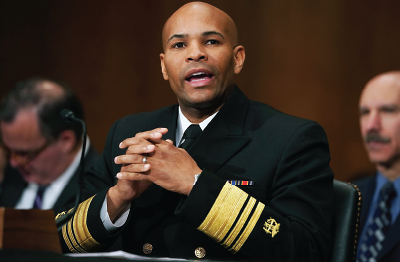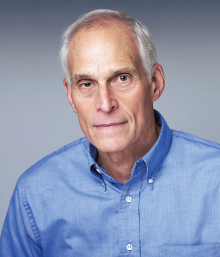The U.S. Surgeon General issued a public health advisory for the first time in more than a decade in which he urged more Americans to carry a medication that can reverse the effects of opioid overdoses. But the prohibitive cost of the two consumer-friendly forms of the medication may thwart widespread adoption.
Naloxone is already carried by many first responders to administer to individuals who have overdosed on an opioid to temporarily reverse its effects, particularly respiratory suppression. Jerome Adams, M.D., M.P.H., is now recommending that more individuals—including substance use disorder treatment providers, those who are personally at risk for an opioid overdose, and their loved ones—keep the medication on hand.
“It is time to make sure more people have access to this lifesaving medication, because 77 percent of opioid overdose deaths occur outside of a medical setting and more than half occur at home,” Adams said in a news release. The advisory comes as the number of opioid overdose deaths has doubled in the past five years, reaching more than 42,000 deaths in 2016.
The two FDA-approved naloxone products for community use are an intranasal spray and a formulation delivered via an auto-injector. The advisory encourages clinicians to prescribe or dispense these products to individuals who are at increased risk for opioid overdose as well as to their friends and family. Clinicians are also urged to determine whether the medications are covered by patients’ insurance or are available at low cost or no cost to them and whether a prescription is needed in their state. The advisory noted that there are laws in most states to protect health care professionals dispensing naloxone from criminal or civil liability, as well as Good Samaritan laws to protect those who administer it in an emergency.
Distributing naloxone in conjunction with training on how to recognize and handle overdoses boosts survival rates, Adams noted in a JAMA editorial published April 5. “An important caveat to these findings, however, is that programs and policies aimed at increasing naloxone availability must be coupled with expanded treatment for opioid use disorder to achieve a sustained reduction of overdose deaths,” he added.
“In theory, the advisory is great,” said Andrew J. Saxon, M.D., chair of APA’s Council on Addiction Psychiatry and a professor at the University of Washington School of Medicine. “Naloxone has great potential to reverse opioid overdoses in the field and probably has low risk of serious side effects.”
“But it can take people very quickly from nearly dead to having very abrupt, severe withdrawal symptoms,” Saxon said. The accompanying discomfort can trigger people to use more opioids to reduce withdrawal symptoms. Other practical issues may make successful widespread distribution a challenge, he added. One major concern is how to provide the necessary training so that lay people can identify someone who may have overdosed, learn how to prevent aspiration, and understand the need to summon emergency help immediately after administering naloxone. Naloxone has a shelf life of 18 to 24 months. Expired naloxone should be replaced.
Naloxone is available without a prescription in 46 states, but how a widespread distribution will be paid for is unclear. As demand has increased in recent years for the naloxone products for community use, pharmaceutical companies have responded with massive price hikes. Narcan intranasal spray was recently retailing at a Washington, D.C., CVS Pharmacy for $135, more than double its average price of a few years ago. And an Evzio auto-injector cost $4,500 at that same store, more than 6.5 times its $690 average price tag in 2014. The price hikes prompted a Congressional investigation in 2015 and at least one state, Massachusetts, to win a $325,000 settlement from drugmaker Amphastar Pharmaceuticals Inc.
“When you think of it in terms of saving a life, the cost is trivial, but there has to be a mechanism to pay for it,” Saxon said.
Saxon is concerned that focus on naloxone will pull attention—and limited public resources—away from the urgent need to provide treatment to the more than 2 million individuals with opioid use disorder (OUD). “I think a more potentially effective intervention would be to ensure that people with the disorder are actually getting the FDA-approved medications—methadone, buprenorphine, or naltrexone—that have been shown to treat the underlying disorder and thereby prevent overdoses,” Saxon said. “Most people with this disorder are not getting the medication.”
Saxon said lawmakers seeking to curb the opioid epidemic should address coverage gaps in safety net programs like Medicaid and Medicare. He noted that Medicare does not cover methadone treatment. While 4 in 10 people with OUD receive their health coverage under state Medicaid plans, according to the Kaiser Family Foundation, a movement by a number of states to add work requirements and other administrative hurdles to their plans jeopardizes access to OUD treatment for these individuals.
APA applauded the Surgeon General for encouraging wider distribution of naloxone. “Opioid use disorder is a significant public health emergency affecting millions of Americans, as well as their friends and families,” said APA CEO and Medical Director Saul Levin, M.D., M.P.A.
“The APA has worked with our psychiatrist members and with other medical organizations to ensure access to treatment for those affected by opioid use disorder, including the use of appropriate medications like naloxone,” Levin said. “We hope that by working together with health providers, communities, and legislators, we can turn the tide on the opioid epidemic.” ■
The
JAMA editorial, “Increasing Naloxone Awareness and Use: The Role of Health Care Practitioners,” can be accessed
here. Levin’s statement is available
here.


